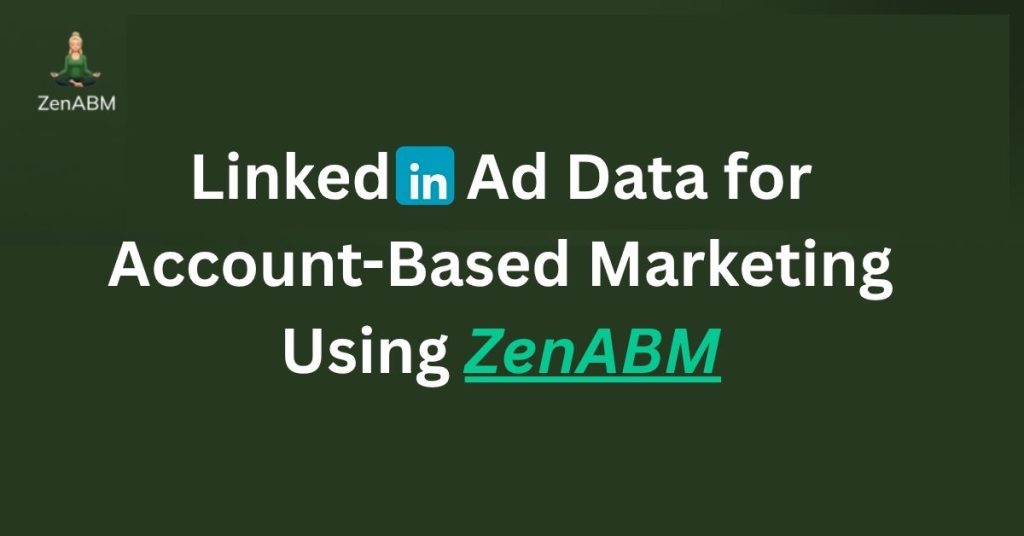LinkedIn isn’t a search engine. For ads, it acts like a billboard your buying committee passes daily. To use LinkedIn ad data for account-based marketing to prove pipeline and ROI at the account level, go beyond clicks and forms. Track company-level engagement down to impressions by campaign and creative. Most standard tools lack accurate view-through attribution, so they miss the real impact your LinkedIn ads deliver.
In this guide, I show where conventional approaches break down for ABM and how to operationalize ZenABM so your team can work from clean LinkedIn ad data for account-based marketing and finally see which campaigns move accounts and revenue.
LinkedIn ad data for account-based marketing: quick summary
- LinkedIn ads act like a billboard. Measure account exposure, not just clicks.
- ABM requires a company-level view through attribution by campaign and creative.
- LinkedIn Companies tab is aggregated at the account level. It is not campaign granular.
- IP deanonymization is unreliable for ABM. Typical accuracy sits near 40 per cent.
- Display and cookie graphs fail for ABM. Cookies depreciate, identity lags, and bots inflate.
- Native CRM syncs track individuals and the same sessions. They miss multi-user and cross-device paths.
- Required data model: first-party API data at the company level for impressions, reactions, and clicks.
- Map engagement to pipeline. Attribute influence across all LinkedIn campaigns, not last click.
- Sync company properties into HubSpot. Use those properties for lists, reports, and workflows.
- Score accounts on exposure and engagement. Route hot accounts to BDRs automatically.
- Tag campaigns by topic. Surface buyer intent clusters for targeted outreach.
- Use ABM dashboards to track impressions, momentum, opportunity influence, and ROI.
- Keep it compliant. API only, no scraping, no fingerprinting.
- All this is available in ZenABM. Try ZenABM now for free or book a demo here.
Why conventional methods cannot prove LinkedIn ad impact in ABM campaigns
Start with a mindset. LinkedIn is primarily a brand and category-shaping channel, not a last-click conversion engine. CTRs are usually low:
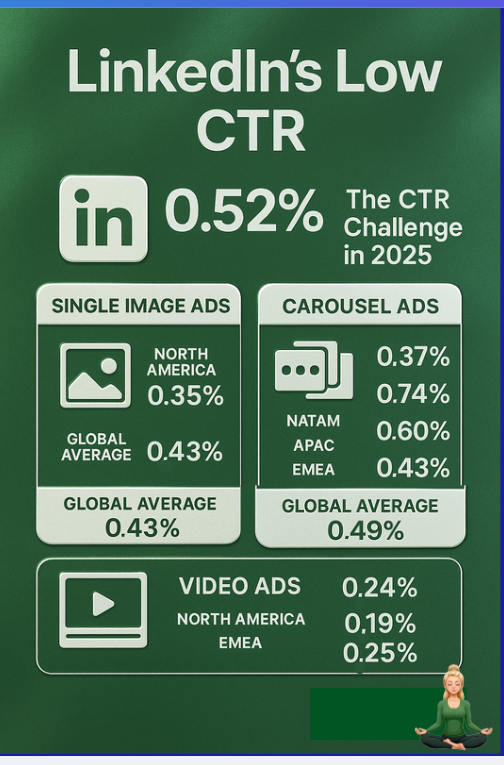
Unlike Google Search, your ICP is not hunting; they are scrolling. A VP sees your ad, does not click, then Googles your brand later or types your URL directly. Analytics often credit Organic or Direct. The real contribution from LinkedIn goes invisible.
The fix: treat impressions and passive engagement as first-class signals. If you want reliable LinkedIn ad data for account-based marketing, capture who saw what and tie that exposure to account movement, even when nobody clicked.
That is where most stacks fall short.
LinkedIn Campaign Manager
LinkedIn’s native reporting introduced the Company Engagement Report that now lives as the Companies tab to surface account-level interactions.
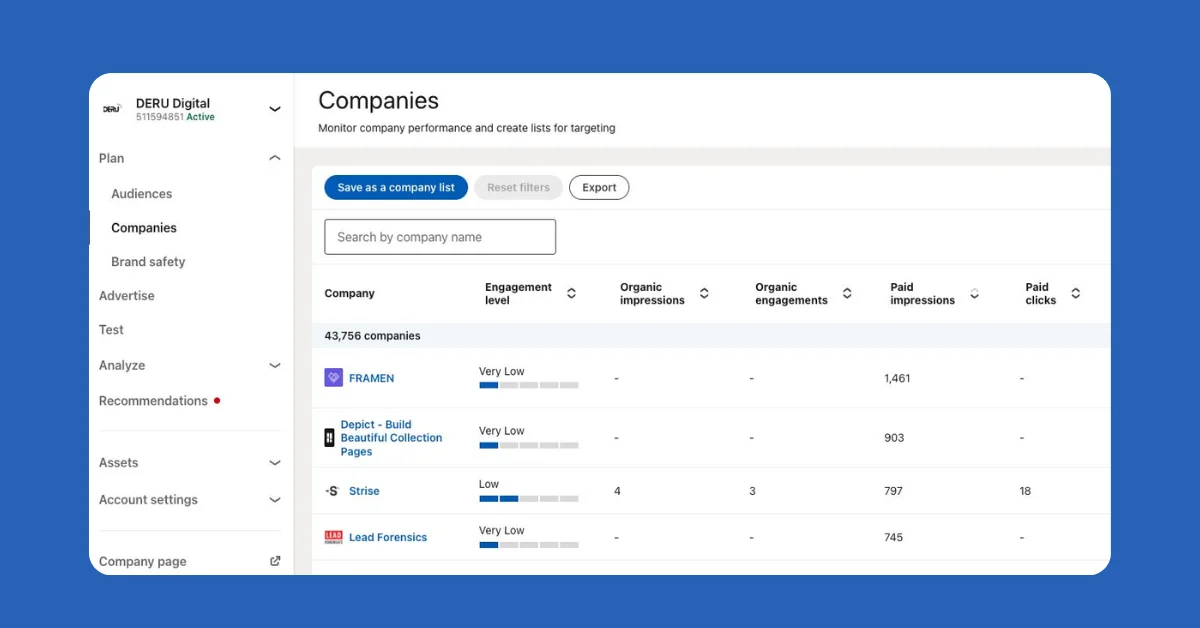
Helpful, but limited for ABM. The data is aggregated across the ad account. You cannot reliably answer which campaign drove impressions and reactions at Acme or which creative moved this buying group. When you run multiple ABM motions in parallel, that granularity is non-negotiable for message testing, readiness scoring, and revenue attribution.
Website deanonymization tools
IP matching tools promise to reveal which companies hit your site. Reality check. They only see visitors who actually arrive, that is, clickers. Viewers who never clicked your LinkedIn ad are still invisible. Even for clickers, accuracy is shaky because of VPNs, shared networks, and dynamic IPs.
As this Syft study shows, typical accuracy hovers around 40 per cent. That is not a foundation for ABM grade attribution.

Real world example. Userpilot ran LinkedIn to site analysis through Clearbit, and the tool identified one company, their own.
For ABM measurement, that is a non-starter.
Display ad networks and behavioral matching
Retargeting platforms such as AdRoll or Criteo try to infer company or intent through cookies and device graphs. Three problems for ABM.
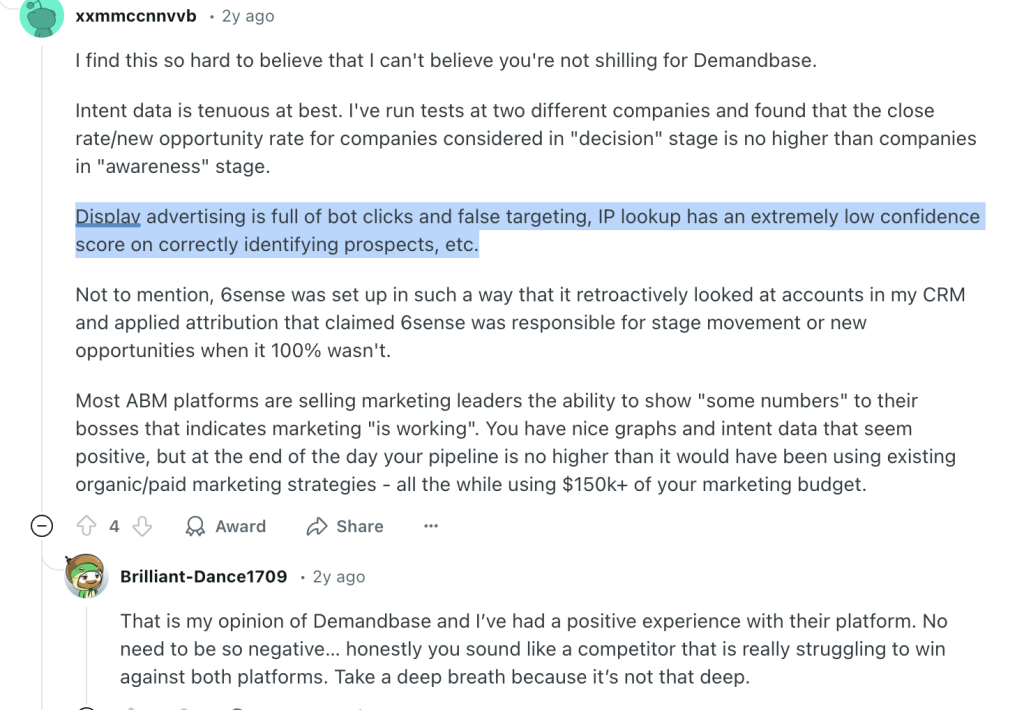
- Third-party cookies are disappearing. Chrome deprecation breaks cross-site tracking.
- Stale identity. People switch jobs, and data lags keep mapping them to old employers.
- Bot inflation. Fake traffic distorts impressions and clicks, which poisons attribution.
LinkedIn Ads to CRM integrations
Native integrations, such as HubSpot sync forms and basic ad data. Great for operations, insufficient for ABM impact.
- Optimized for individual contact attribution, not company-level exposure.
- Misses cross-session and cross-device effects where someone views on mobile and converts on desktop next week.
- Limited visibility into which key accounts keep seeing and reacting to your ads over time.
- No native mapping of ad engagement to pipeline stages and open opportunities.
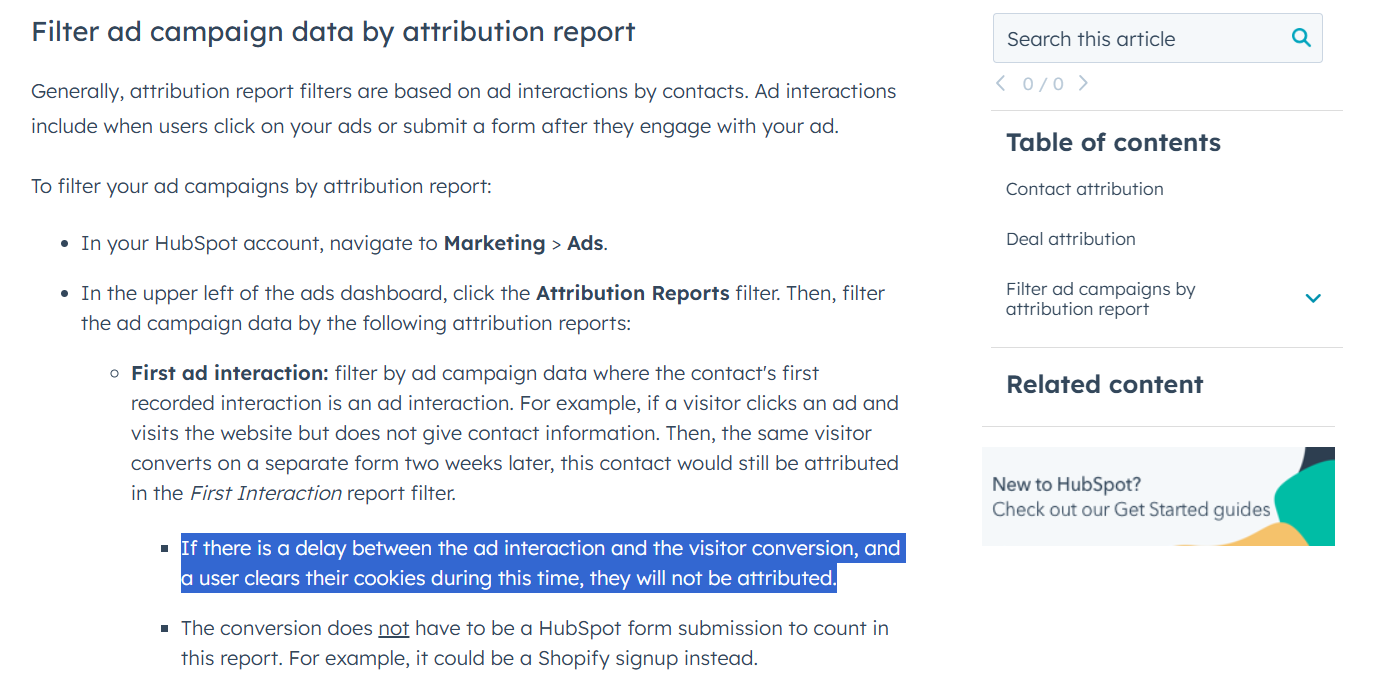
In B2B committees, one stakeholder views the ad and another fills the form days later. Last click models and cookie limits lose that connection. If you care about LinkedIn ad data for account-based marketing, you need a company-level view through model, not just a click-through one.
- CRM or Insight Tag. Logs direct the same session clicks to forms. Misses impressions and delayed conversions.
- IP tools. Shallow coverage near 40 per cent and only for known sessions.
- Campaign Manager Companies tab. Some impression by company data exists, not per campaign or creative, which blocks reliable A or B testing and attribution.
How ZenABM turns LinkedIn ad data into ABM results
To evaluate LinkedIn ads in ABM, you need first-party, campaign-level, company-level visibility across impressions, reactions, and clicks, per account, not just per person. ZenABM provides that visibility through LinkedIn’s official APIs. No cookies. No IP matching. No scraping.
See every company that viewed or interacted at the campaign level
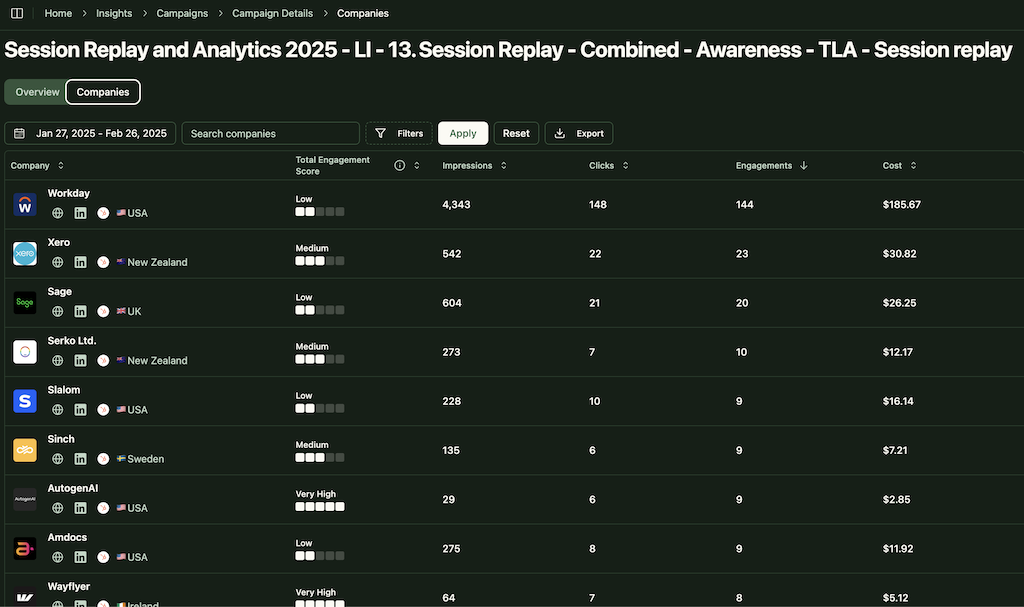
For each campaign, ZenABM surfaces account-level impressions, reactions, shares, and clicks, along with CRM linked deal context.
- Counts impressions even when there are no clicks or submissions.
- Logs reactions, comments, and shares as engagement signals.
- Captures clicks without relying on cookies.
- Tracks view through so non-clicking exposure still receives credit.
Example. Company X does not click, views your ads repeatedly, then books a demo a month later. ZenABM links those exposures to the opportunity so the campaign receives a fair assist.
Fair multi-touch attribution across campaigns
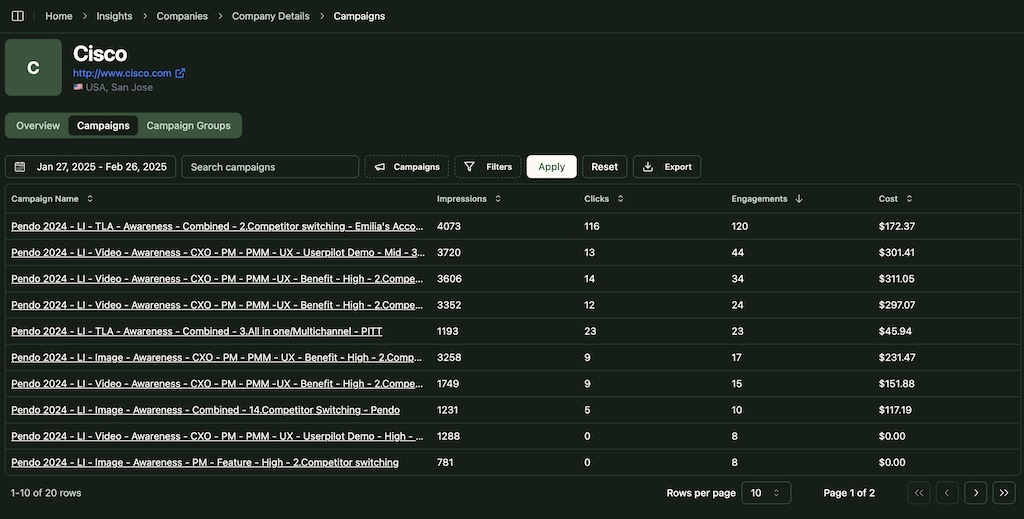
Awareness to product education to conversion ads. Every touchpoint is visible. Last click does not steal the show.
Auto sync engagement into HubSpot and Salesforce at the company level
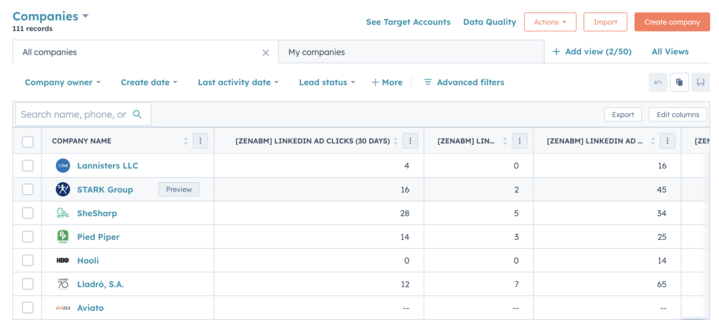
No CSV wrangling. Properties such as Impressions, Last 7 Days, and Clicks, Last 7 Days, per campaign, appear on Company records. Use those values for lists, reports, routing, and automation.
ABM stage tracking with customizable thresholds
ZenABM tracks the ABM stage of each account from CRM data and engagement levels, and you control the thresholds.
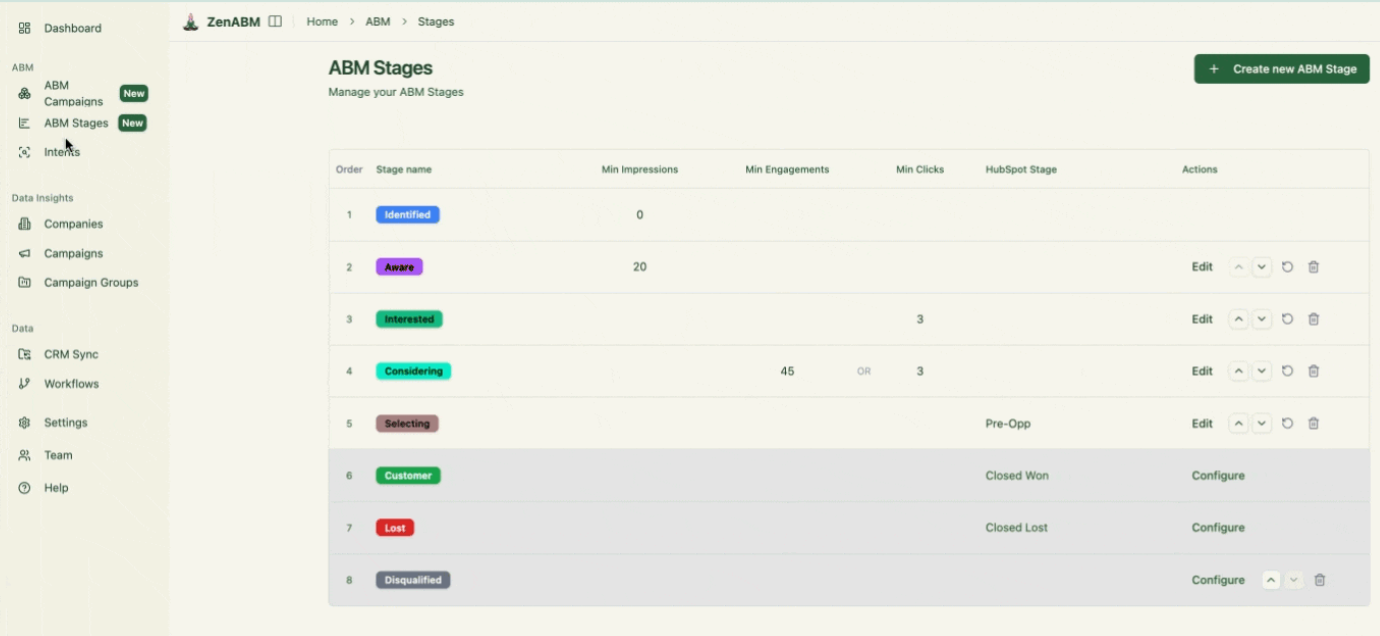
Scoring and BDR routing on real engagement

Set thresholds based on cumulative impressions, reactions, or clicks. When an account heats up, auto route to the right BDR, launch sequences, or start a one-to-one play.

Intent by topic, tied to campaigns
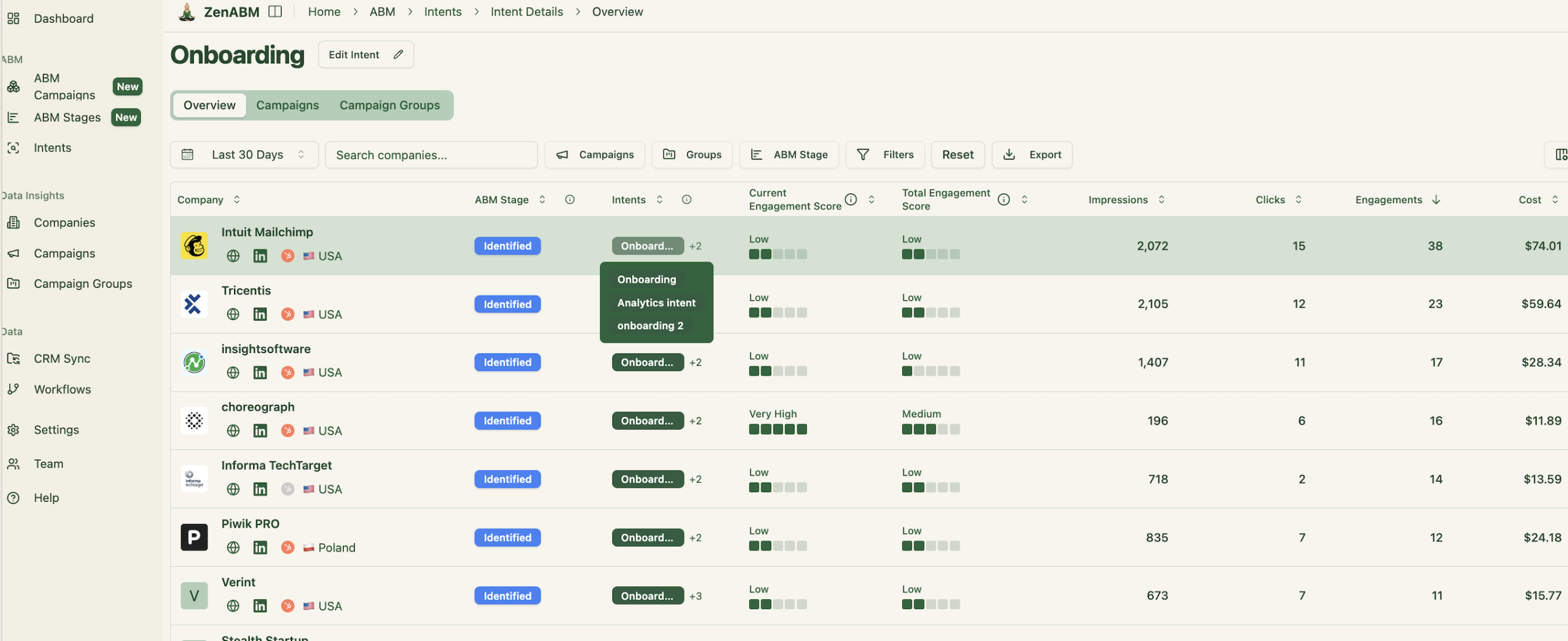
Tag campaigns by use case, feature, or vertical. ZenABM clusters accounts by what they engage with so reps can lead with the right story.
Connect ad exposure to pipeline and revenue

See which campaigns influenced opportunities and revenue beyond the last click. This is the attribution model ABM actually needs.
ABM analytics dashboards out of the box
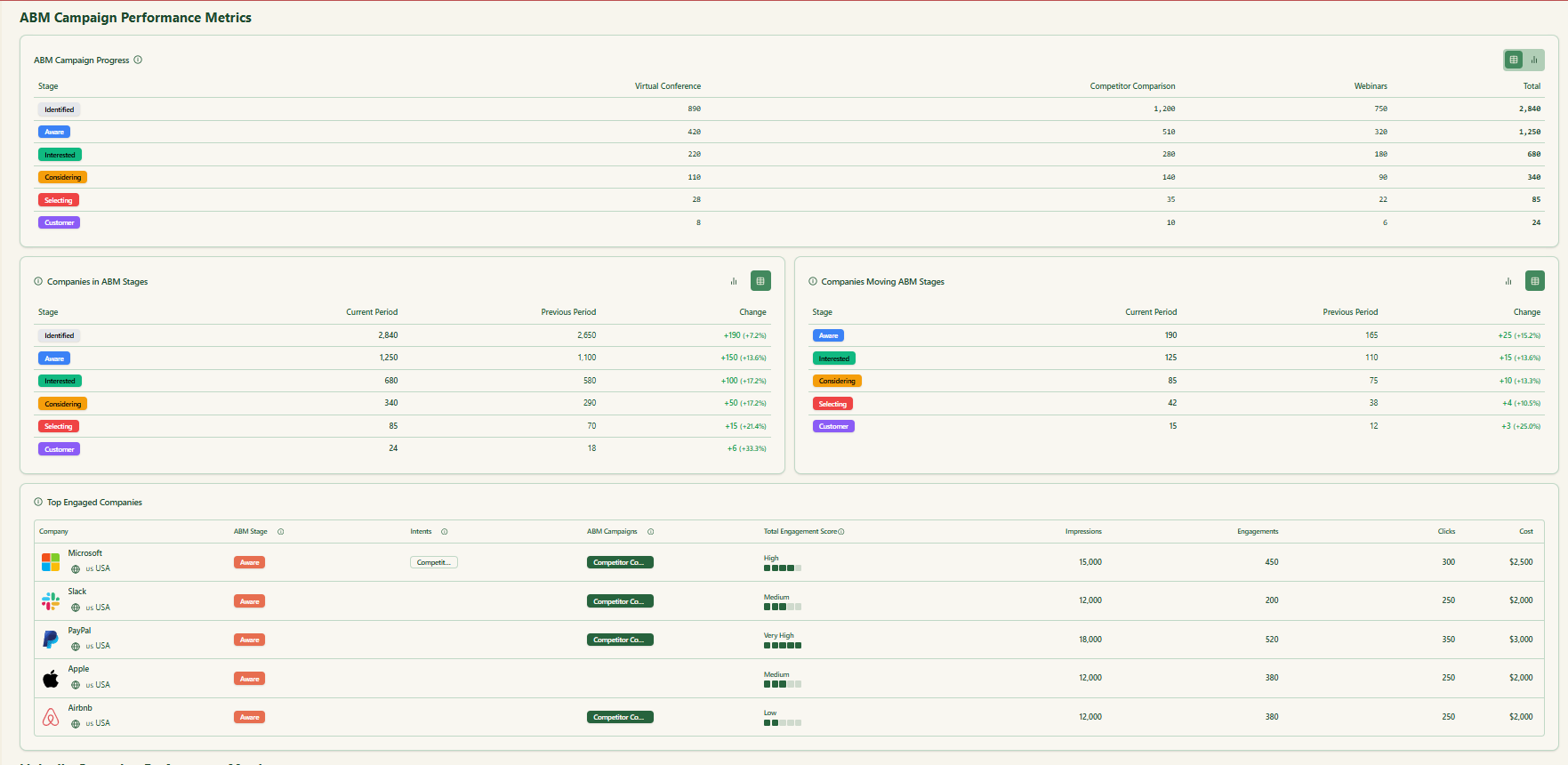

Prebuilt views spotlight what matters. Account impressions, engagement momentum, opportunity influence, and ROI by campaign and by account.
First-party compliant data without scraping
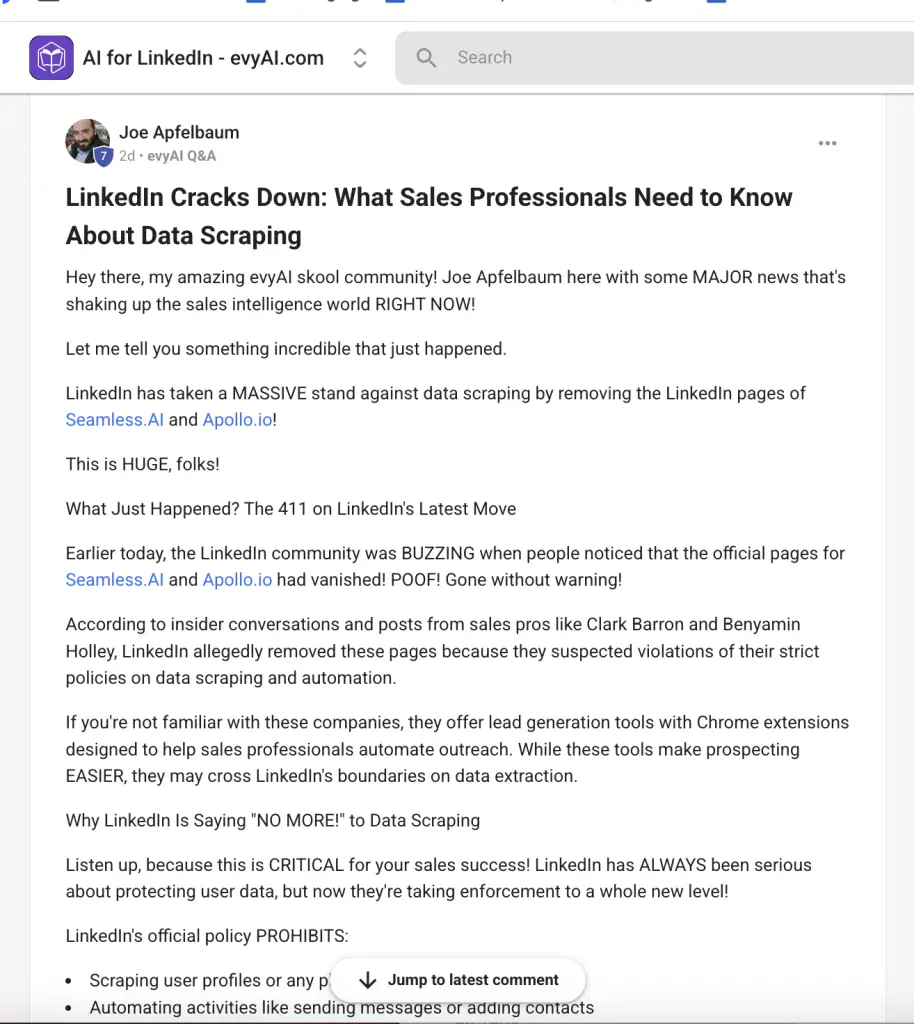
ZenABM uses LinkedIn’s sanctioned APIs. No scraping. No fingerprinting. Clean, compliant, first party telemetry.
Essential LinkedIn ad data points for account-based marketing
- Impressions by company and campaign. The baseline signal for exposure inside target accounts.
- Unique reach inside an account. Count of distinct members reached to gauge buying committee coverage.
- Frequency by company. How often does the same account see a message within a period?
- Creative level reactions and comments. Qualitative resonance by topic or offer.
- Role or seniority mix where available. Early executive exposure often predicts faster velocity.
- Cost per engaged account. Spend divided by the number of accounts with meaningful interactions.
- View through influenced opportunities. Opps where impressions preceded activity without a tracked click.
- Multi-campaign touch chains. Sequence of themes that lead to meetings and opp creation.
Playbook: turn ad exposure into pipeline
- Targeting. Load your tiered account lists and role targets in LinkedIn. Keep one to few and one to many motions distinct.
- Tagging. Tag campaigns by use case, feature, and industry so intent clusters form in ZenABM.
- Sync. Enable ZenABM to push company properties into HubSpot or Salesforce.
- Alerts. Build workflows that notify owners when Impressions_7d crosses a threshold or when Frequency spikes.
- Routes. Auto-assign BDRs when the Score exceeds the hot threshold and attach the top campaign topics for context.
- Offers. Follow exposure with a matching middle of funnel asset, such as a case study from the same industry.
- Meetings. Use multi-touch summaries in outreach. Reference the exact campaign and topic that drove engagement.
- Review. In weekly ABM standups, review cost per engaged account, top creative by topic, and new intent clusters.
Over to you
Clicks and forms tell a small part of the story. In long multi-stakeholder cycles, the real value sits at the account level view. When you can see who saw which campaigns, how often, and how that exposure nudged pipeline, you can stop guessing and start optimizing.
If you are serious about LinkedIn ad data for account-based marketing, shift to first-party company-level analytics that capture impressions, reactions, and cross-campaign influence, then sync that data to CRM for scoring, routing, and revenue reporting. That is exactly what ZenABM delivers. See the view through the story you have been missing and double down on the campaigns that actually move accounts.

